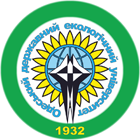Authors: Sofronkov А.N., Gavdzik A., Gorlichenko M.G., Shevchenko V.F., Kostik V.V., Vasileva M.G., Grib K.A.
Year: 2016
Issue: 20
Pages: 135-141
Abstract
Biofuel production steadily grows all over the world. Therefore, for instance, according to the information of the German Biofuel Association (UFOP), biofuel production in Germany makes up 2·106 t/year (3% of the entire fuel market). Use of biofuel is profitable not only due to its low price, but also due to the fact that in the process of biofuel burning carbon dioxide (CO2) is released in the atmosphere in the amount, which plants acting as raw material for biofuel, consume from the air.
However, the residues left after biofuel production are being accumulated at present, thus constituting a real danger for the environment, therefore there exists an objective necessity for further processing and repeated use thereof. The research was conducted with the help of the chromatographic method, infrared spectroscopy, X-ray structure analysis and removal of polarization curves in an electrochemical reactor at different temperatures (298, 323, 343 К), for which reason infrared spectrometer «Specord», X-ray apparatuses УРС-6, УРС-50 and a potentiostat System-5000 were employed. Pt, Ni-Re, Ni were involved as catalyzers both smooth and spread on coal. It was demonstrated that the developed methodology of electrooxidation of residues formed during biodiesel production, involving catalyzers, spread on coal basis, allows to better oxidate the residues formed while biodiesel production and to receive products of electrooxidation that can be used in the industry (accelerants of organic synthesis, ingredients of lotions, emulsifiers, creams for tan).
The conducted research demonstrated prevailing value of d-characteristic surfaces while selecting active catalyzers used while oxidating different substances.
Bibliography
- Pozykivanie i energetyczne wykorzystanie biogazu roslniczego, cze, ść 1, 2, 3 (Zespól autorsti; Kicrownik E. Glodek) IMMB, Opole, 2007. 72 p.
- Porzinskiy S., Yanovskiy M., Berman A. Osnovy primeneniya khromatografii v katalize [Fundamentals of chromatography applications in catalysis]. Moscow: MIR, 2006. 560 p.
- K. Vetter. Elektrochemicsche kimtik. Berlin, Gottingen, Heidelberg, 1961. 856 p.
- Kozitsina L.A., Kupletskaya N.B. Primenenie UF-, IK- i YaMR spektroskopii v organicheskoy khimii [Application of UV, IR and NMR spectroscopy in organic chemistry]. Moscow: Vysshaya shkola, 1971. 264 p.
- Ioffe B.V., Kostikov R.R., Razin V.V. Fizicheskie metody opredeleniya stroeniya organicheskikh molekul [Physical methods of determining the structure of organic molecules]. Leningrad: Leningrad university publ., 1976. 344 p.
- Sil’versteyn R., Bassler G., Morril T. Spektrometricheskaya identifikatsiya organicheskikh soedineniy [Spectrometric identification of organic compounds]. Moscow: MIR, 1977. 590 p.
- Yusti E., Vinzel’ A. Toplivnye elementy [The fuel cells]. Moscow: MIR, 1964. 480 p.
- Rukovodstvo po rentgenostrukturnomu issledovaniyu mineralov [Guide to x-ray diffraction study of the moth crystals]. Leningrad: Neva, 1975. 218 p. (Ed.: V.A. Frank-Kamenetskyi).
- Rusakov A.A. Rentgenografiya metallov [Radiography of metals]. Moscow: Atomizdat, 1977. 212 p.
- Mirkin L.I.. Spravochnik po rentgenostrukturnomu analizu polikristallov [Handbook of x-ray diffraction analysis of polycrystals, and in physico-mathematical literature]. Moscow: Phisics-Mathematics Literatures Publ., 1961. 863 p.
- Davtyan O.K. Kinetika i kataliz khimicheskikh i elektrodnykh protsessov [Kinetics and catalysis chemical and electrode processes]. Armyanskaya SSR Academy Sciences Publ., 1984. 383 p.
- Elektrokhimiya organicheskikh soedineniy [Electrochemistry of organic compounds]. Moscow: MIR, 1976. 731 p. (Ed. M. Bayder).



